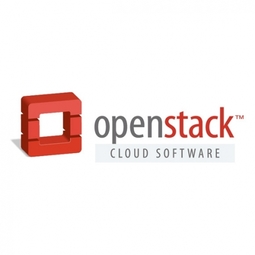The U.S. Army Cyber School OpenStack Use Case: Saving Millions and Making Changes for the Benefit of National Defense

公司规模
Large Corporate
地区
- America
国家
- United States
产品
- OpenStack
- Ceph
- Blackboard LMS
技术栈
- OpenStack
- Ceph
- CI Pipeline
- Heat
实施规模
- Enterprise-wide Deployment
影响指标
- Cost Savings
- Digital Expertise
- Innovation Output
技术
- 基础设施即服务 (IaaS) - 云计算
- 平台即服务 (PaaS) - 应用开发平台
适用行业
- 国家安全与国防
- 教育
适用功能
- 商业运营
用例
- 远程协作
- 虚拟培训
服务
- 云规划/设计/实施服务
- 系统集成
关于客户
The United States Army Cyber School (USACYS) is a critical institution responsible for training and educating soldiers to protect the interests of the United States and its allies. The school focuses on equipping soldiers with the necessary skills in computer science, electrical engineering, robotics, physics, and mathematics to effectively defend against cyber threats. USACYS plays a vital role in ensuring force readiness and national defense by providing cutting-edge education and training programs. The institution is committed to embracing innovation and change to stay ahead of evolving threats and maintain a high standard of education. With a focus on leveraging technology to enhance learning outcomes, USACYS aims to provide soldiers with the tools and knowledge they need to succeed in their missions. The school is part of a larger effort to modernize and improve the U.S. Army's capabilities in the digital age, ensuring that soldiers are prepared to face the challenges of modern warfare.
挑战
The U.S. Army Cyber School (USACYS) faced the challenge of training and educating soldiers in a rapidly evolving technological landscape. The need was to ensure that soldiers are well-prepared to defend national interests using advanced computer science, electrical engineering, robotics, physics, and mathematics. Initially, the infrastructure was limited, with only three borrowed servers connected via CAT6 cables. This setup was insufficient to meet the growing demands of a comprehensive and up-to-date training program. The challenge was to transition from this rudimentary setup to a more robust, scalable, and efficient system that could support a large number of users and provide a seamless learning experience. Additionally, there was a need to integrate various educational tools and platforms to ensure that the curriculum remained relevant and technically accurate while minimizing the time and effort required for content curation.
解决方案
To address the challenges faced by the U.S. Army Cyber School, a comprehensive solution was implemented using OpenStack, a cloud computing platform. The transition involved moving from a limited setup of three borrowed servers to a robust 2000-core cluster supported by a 4PB Ceph array. This new infrastructure is entirely code-driven, allowing for greater scalability and efficiency. The solution also included the integration of a continuous integration (CI) pipeline that connects the Blackboard LMS, Heat, and an asciidoc-based curriculum-as-code repository. This integration ensures that the student experience is always up-to-date, relevant, and technically accurate. By adopting a DevOps-oriented approach, the school was able to streamline content creation and curation, allowing instructors to focus on teaching and developing new content. The OpenStack solution not only improved courseware quality and student outcomes but also resulted in significant cost savings in platform total cost of ownership (TCO) expenses. This innovative approach has positioned USACYS years ahead of similar government education programs, enabling the school to continue embracing change and innovation for the benefit of national defense.
运营影响
数量效益

Case Study missing?
Start adding your own!
Register with your work email and create a new case study profile for your business.
相关案例.

Case Study
Data Capture for Afghanistan Forces
Electronic equipments on the field of Afghanistan provided information on the status of the vehicle and to identify potential threats surrounding it to the British Force. The monitoring and interpretation of this data requires robust and sophisticated digitization for data capture and communication.

Case Study
Revolutionizing Medical Training in India: GSL Smart Lab and the LAP Mentor
The GSL SMART Lab, a collective effort of the GSL College of Medicine and the GSL College of Nursing and Health Science, was facing a challenge in providing superior training to healthcare professionals. As clinical medicine was becoming more focused on patient safety and quality of care, the need for medical simulation to bridge the educational gap between the classroom and the clinical environment was becoming increasingly apparent. Dr. Sandeep Ganni, the director of the GSL SMART Lab, envisioned a world-class surgical and medical training center where physicians and healthcare professionals could learn skills through simulation training. He was looking for different simulators for different specialties to provide both basic and advanced simulation training. For laparoscopic surgery, he was interested in a high fidelity simulator that could provide basic surgical and suturing skills training for international accreditation as well as specific hands-on training in complex laparoscopic procedures for practicing physicians in India.

Case Study
IoT platform Enables Safety Solutions for U.S. School Districts
Designed to alert drivers when schoolchildren are present, especially in low-visibility conditions, school-zone flasher signals are typically updated manually at each school. The switching is based on the school calendar and manually changed when an unexpected early dismissal occurs, as in the case of a weather-event altering the normal schedule. The process to reprogram the flashers requires a significant effort by school district personnel to implement due to the large number of warning flashers installed across an entire school district.
Case Study
Enhancing Security and Compliance in Remitly's Global Money Transfer Service with Fastly
Remitly, an online remittance service, was faced with the challenge of securing its proprietary global transfer network. The company needed a security solution that could meet PCI requirements and protect customers' sensitive transactions through its mobile application. The solution had to be capable of defending against new and emerging attack types without impacting performance. Remitly also had to deal with irregular traffic patterns, such as a sudden spike in account transfers from a small network segment on the Pacific coastline of South America. The company needed to determine in real time whether such traffic indicated an attack or valid requests. A traditional web application firewall (WAF) would not be able to distinguish this traffic, potentially leading to customer frustration if the IP was blacklisted.

Case Study
Implementing Robotic Surgery Training Simulator for Enhanced Surgical Proficiency
Fundacio Puigvert, a leading European medical center specializing in Urology, Nephrology, and Andrology, faced a significant challenge in training its surgical residents. The institution recognized the need for a more standardized and comprehensive training curriculum, particularly in the area of robotic surgery. The challenge was underscored by two independent studies showing that less than 5% of residents in Italian and German residency programs could perform major or complex procedures by the end of their residency. The institution sought to establish a virtual reality simulation lab that would include endourological, laparoscopic, and robotic platforms. However, they needed a simulator that could replicate both the hardware and software of the robotic Da Vinci console used in the operating room, without being connected to the actual physical console. They also required a system that could provide both basic and advanced simulation training, and a metrics system to assess the proficiency of the trainees before they performed surgical procedures in the operating theater.

Case Study
Major Aerospace Company Automates Asset Management
The O&M division of an aerospace and global security company was using spreadsheets to manually track more than 3,000 assets assigned to students and staff. Maintaining audit trails for this high volume of equipment became increasingly time-consuming and challenging. The chore involved knowing precisely what equipment was on hand, what had been issued, its location and the name of the custodial owner of each item. Every aspect of this task was carried owner of each item. Every aspect of this task was carried out by individuals with spreadsheets. Manually documenting the full lifecycle of each asset added to the burden. This included tracking maintenance requirements and records, incidents and damages, repairs, calibrations, depreciation, and end-of-life data.






